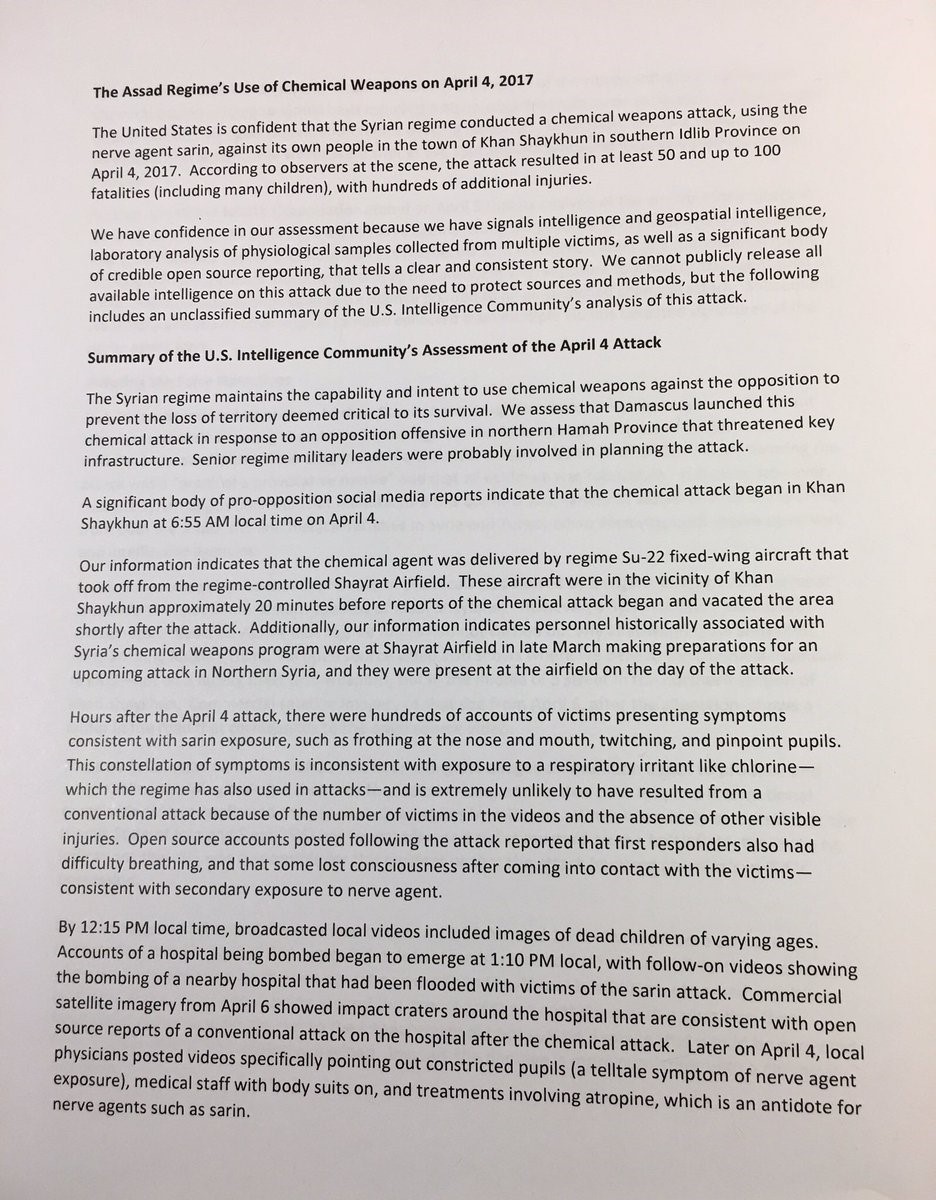
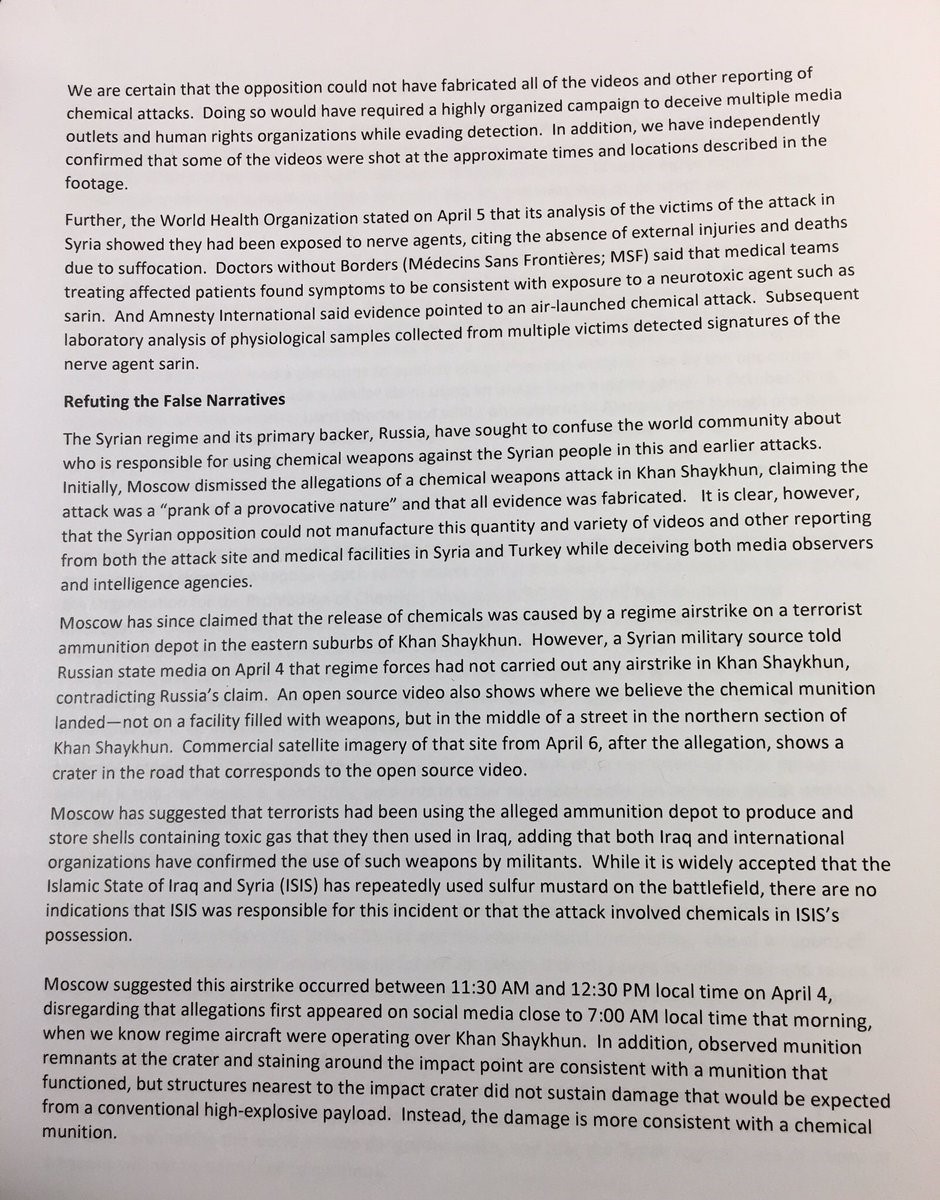
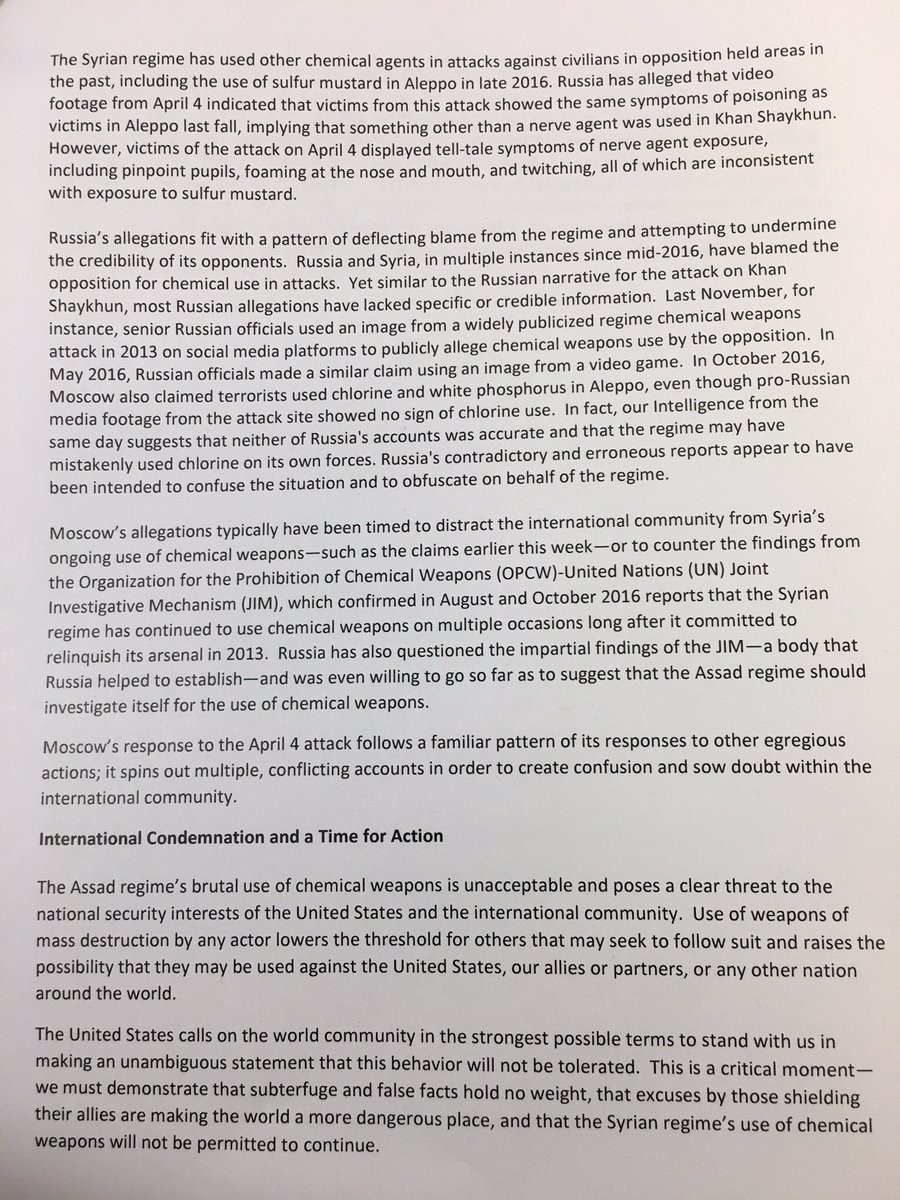
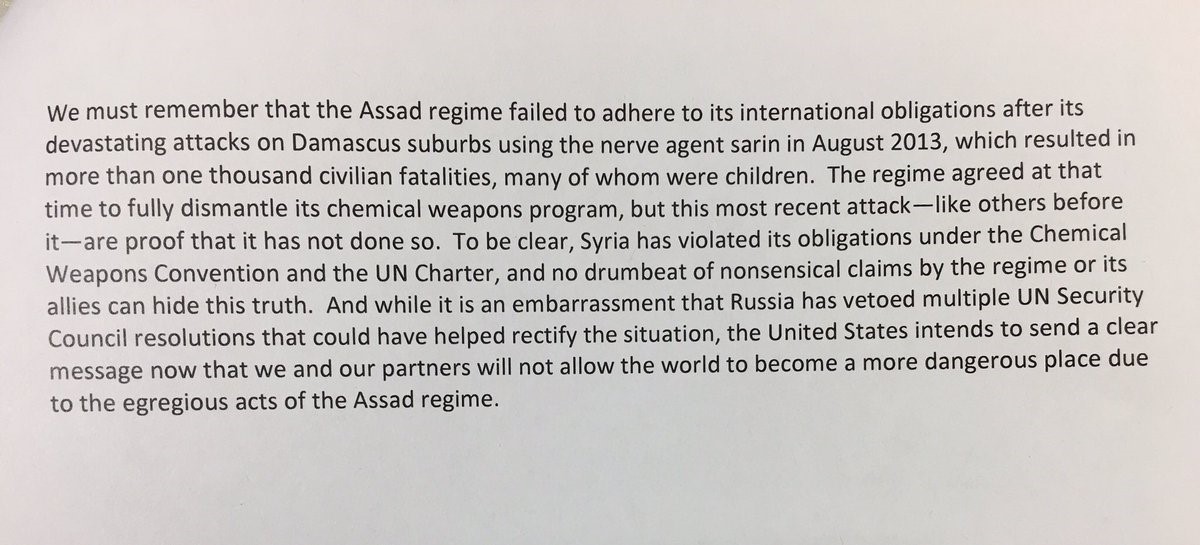

Update:
According to that CW disarmament specialist, ОБАС-250-235П is one and only Sov/Rus aviation bomb to spread Sarin. That looks like filler cappic.twitter.com/1sSpNdHt0m and Associated Press is reporting:
Senior U.S. official says U.S. has concluded that Russia knew in advance of Syria’s chemical weapons attack last week – AP
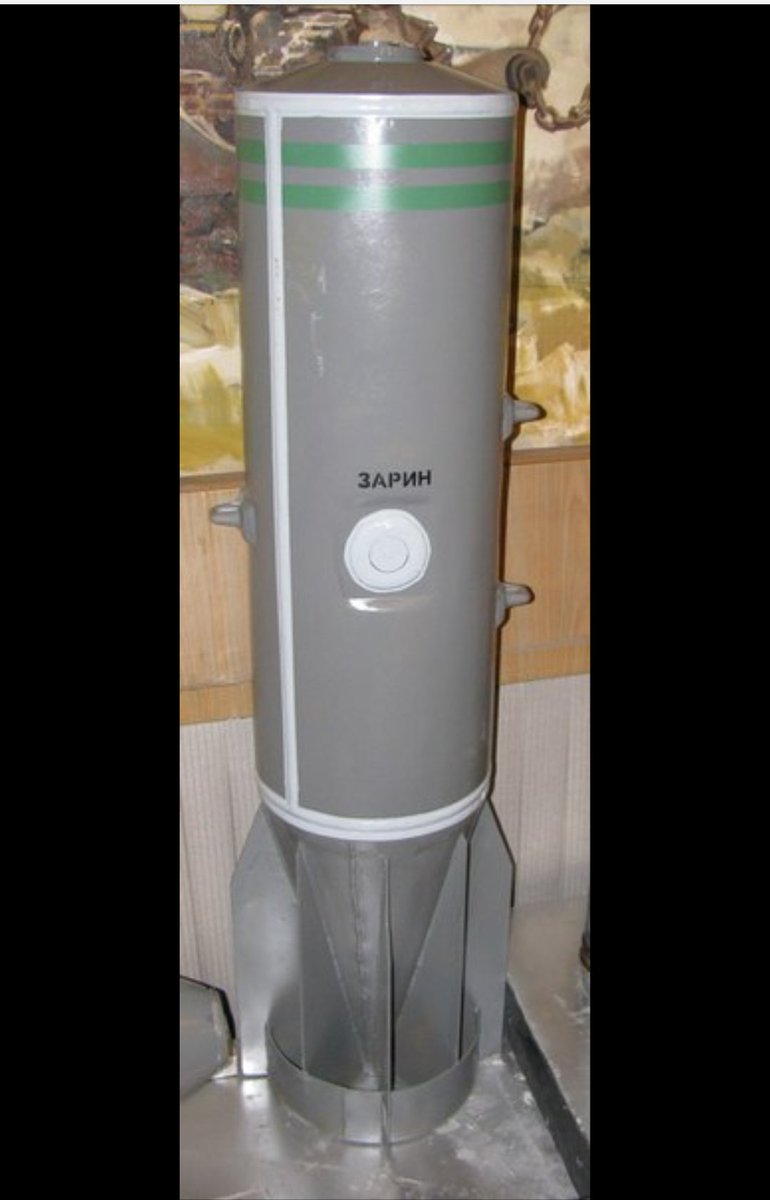
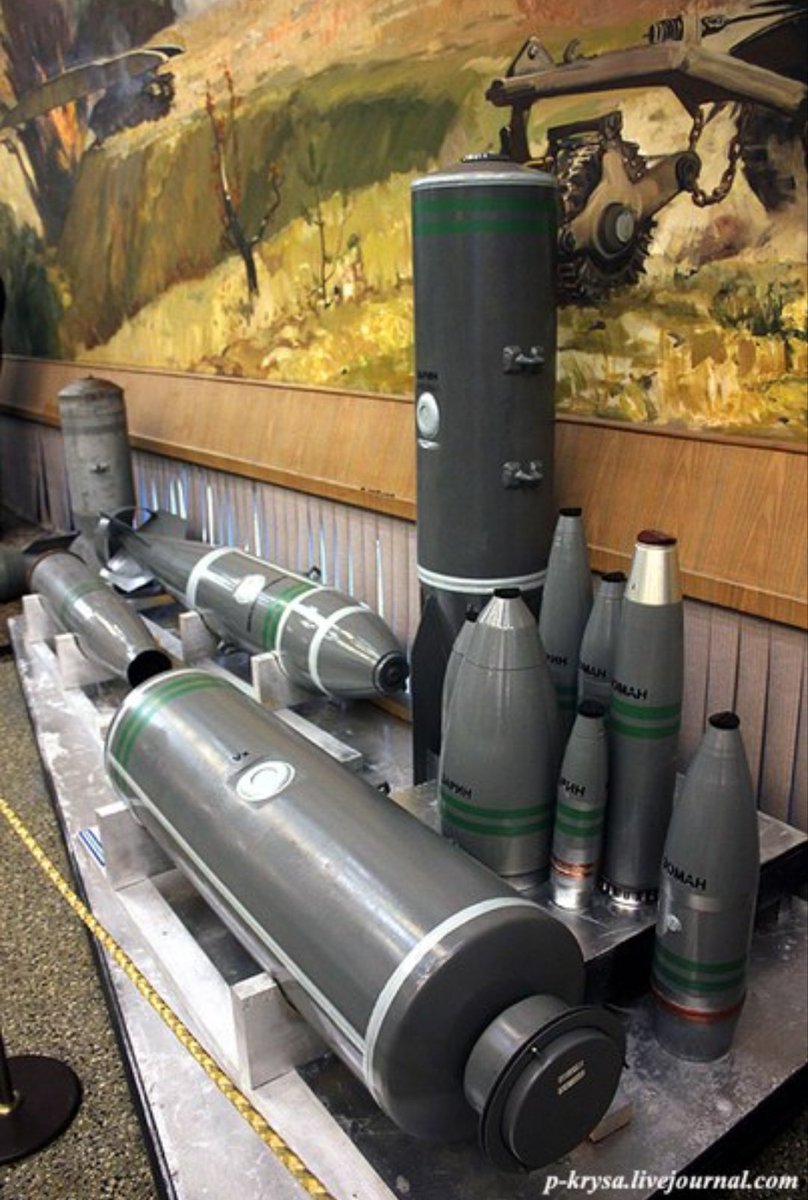
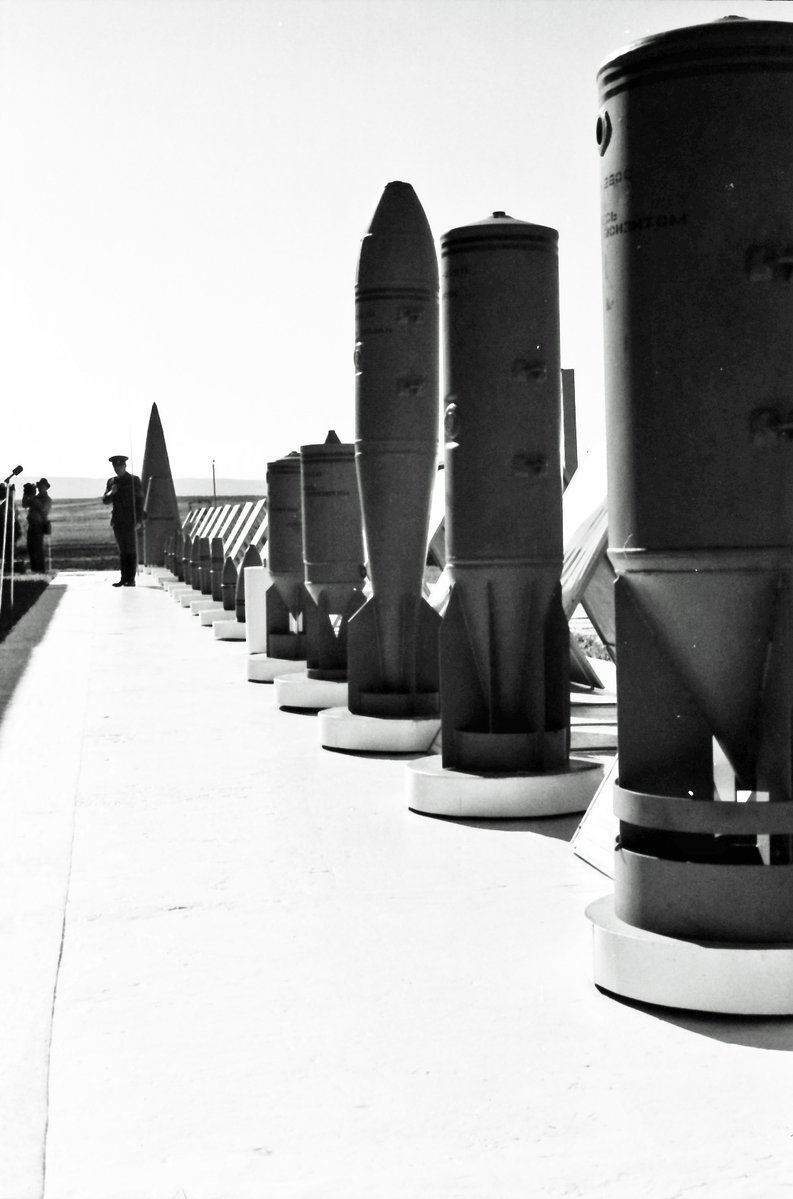
So….
Who lied? Susan Rice? Yes, John Kerry? Yes, Barack Obama….especially yes. While John Kerry worked with Russia to eliminate the ‘declared’ chemical weapons in Syria…note below it refers to mustard gas. When Russia presented the document to the Obama administration, we signed it as well. So, the Assad regime, Putin, Iran and the Obama White House all have their feet in this swamp. Got that?
Also note the percentage of the CW inventory destroyed…hummm right?
Release No: NR-052-14
January 27, 2014M/V Cape Ray Deployment
Today the Department of Defense announced the deployment of M/V Cape Ray from Portsmouth, Va. M/V Cape Ray is the primary contribution of the Department of Defense toward international efforts to eliminate Syria’s chemical weapons material program. Over the last several months, hundreds of government and contract personnel have worked tirelessly to prepare the vessel to neutralize Syrian chemical materials and precursors using proven hydrolysis technology. This achievement could not have been possible without these remarkable contributions.
The United States remains committed to ensuring its neutralization of Syria’s chemical materials prioritizes the safety of people, protects the environment, follows verification procedures of the Organization for the Prohibition of Chemical Weapons (OPCW), and with applicable standards. All waste from the hydrolysis process on M/V Cape Ray will be safely and properly disposed of at commercial facilities to be determined by the OPCW. No hydrolysis byproducts will be released into the sea or air. M/V Cape Ray will comply with all applicable international laws, regulations, and treaties.
It is the responsibility of the Assad regime to transport the chemical materials safely to facilitate their removal for destruction. The international community is poised to meet the milestones set forth by the OPCW, including the June 30 target date for the total destruction of Syria’s chemical weapons materials. The United States joins the OPCW and the United Nations in calling on the Assad regime to intensify its efforts to ensure its international obligations and commitment are met so these materials may be removed from Syria as quickly and safely as possible.
Transfer of Syrian Chemicals to Cape Ray is Complete
A trailer operator for Medcenter Container Terminal transfers a container from the M/V Ark Futura, a Danish cargo ship, along the dock to the loading deck of M/V Cape Ray during operations at the Italian port of Gioia Tauro, July 2, 2014. The Cape Ray is tasked with the neutralization of specific chemical materials from Syria in accordance with the Organization for the Prohibition of Chemical Weapons guidelines while operating in international waters. U.S. Navy photo by Seaman Desmond Parks
WASHINGTON, July 3, 2014 — The transfer of Syrian chemicals from the Danish container ship Ark Futura to the Motor Vessel Cape Ray has been completed, Pentagon Press Secretary Navy Adm. John Kirby said in a statement issued yesterday.
After the transfer was made in the Italian port of Gioia Tauro, Kirby said in the statement, the Cape Ray departed yesterday for international waters in the Mediterranean Sea to emp loy its onboard system to neutralize the chemicals.
Kirby’s statement reads as follows:
The transfer of Syrian chemicals from the Danish container ship Ark Futura to the Motor Vessel Cape Ray is complete. Cape Ray departed the Italian port of Gioia Tauro this afternoon for international waters in the Mediterranean Sea, where neutralization operations will soon begin. The neutralization process should take several weeks to complete.
Secretary Hagel is grateful to Danish and Italian authorities for their support in this process and is enormously proud of everyone who helped make possible this safe and incident-free transfer. He extends a special thanks to the men and women of the Cape Ray, Naval Forces Europe, and U.S. European Command teams for their impeccable planning and execution.
***
WASHINGTON, Feb. 13, 2014 – The container ship M/V Cape Ray has arrived at Rota, Spain, for a port visit while en route to aid in removal of Syrian chemical materials, Pentagon spokesman Army Col. Steve Warren said.
The vessel — part of the Transportation Department Maritime Administration’s Ready Reserve Force program — left Portsmouth, Va., Jan. 27. Hundreds of government and contract personnel worked for several months to prepare the vessel to neutralize Syrian chemical materials and precursors using hydrolysis technology.
“When Syria has completed removal of its chemical materials, MV Cape Ray will depart Rota and proceed to the transloading port in Italy, where she will take the chemicals on board,” Warren said in a statement announcing the vessel’s arrival in Spain. “Our ship is prepared and our crew is trained to safely neutralize Syria’s chemical materials. We stand ready to fulfill our contributions to this international effort; it is time for Syria to live up to their obligations to the international community.”
By offering Rota for a port of call before MV Cape Ray receives a load of chemical materials and embarks on the destruction phase of its mission, Spain is making a contribution to the United Nations-sanctioned multinational effort to rid Syria of its chemical weapons materials, officials at the U.S. Embassy in Madrid said.
The United States plans to neutralize the chemicals at sea in international waters using proven hydrolysis technology, embassy officials added. All waste from the hydrolysis process aboard MV Cape Ray will be safely and properly stored on board until it is disposed of at commercial facilities to be determined by the Organization for the Prohibition of Chemical Weapons, they added, emphasizing that no hydrolysis byproducts will be released into the sea or air.
Defense Secretary Chuck Hagel sent a message to the Cape Ray’s crew, wishing them well as they left Portsmouth.
“As you all know, your task will not be easy,” Hagel wrote. “Your days will be long and rigorous. But your hard work, preparation and dedication will make the difference.
“You are ready,” the secretary continued. “We all have complete confidence in each of you. You represent the best of our nation, not only because of your expertise and commitment, but because of your willingness to serve when called upon. For that, we will always be grateful. We are also grateful to your families for the love and support they have given you. On behalf of our country and the American people, I wish you much success. Take care of yourselves. God bless you all.”
***
WASHINGTON, Aug. 11, 2014 – Specialists on the U.S. container ship M/V Cape Ray continue their work in the Mediterranean Sea, neutralizing chemical materials from Syria and contributing to what the Organisation for the Prohibition of Chemical Weapons, or OPCW, on August 7 confirmed as the destruction of 74.2 percent of Syria’s chemical stockpile.
The Spanish patrol boat Infanta Elena (P-76), left, escorts the container ship MV Cape Ray (T-AKR 9679) through the Strait of Gibraltar en route to the Mediterranean Sea June 26, 2014. U.S. Navy photo by Mass Communication Specialist Seaman Desmond Parks
(Click photo for screen-resolution image);high-resolution image available.U.S. military and civilian specialists aboard the ship began using the field deployable hydrolysis system to neutralize Syrian chemical materials on July 7, Director of Pentagon Press Operations Army Col. Steve Warren told reporters at the time, anticipating that it would take about 60 days to complete the job.
On August 5 at the Aberdeen Proving Ground-Edgewood Team CBRNE capabilities showcase, Adam Baker, a chemical engineer and project manager with the U.S. Army Edgewood Chemical Biological Center, detailed the hard work that went into turning a land-based hydrolysis system into a field-deployable system in just five months.
“We had a gap in capabilities for a system that was transportable, that could be operated out of a remote location and that would [process] bulk liquid agent at high throughputs.”
The system had to be able to be transported to a remote site and set up and be sufficient with a supply of reagents and diesel fuel, Baker explained.
The project was given the go-ahead in February 2013. In November 2013, he said, “That’s when they made the decision to start putting it on the Cape Ray.”
The timeline was short, Baker said, and they couldn’t start from scratch with a new system, so they used a process from the former Aberdeen Chemical Demilitarization Facility, or ABCDF, that had been used a decade ago to neutralize 1,700 tons of mustard – part of the destruction of the United States’ own chemical stockpile.
Baker said the engineers compressed that process into transportable, standardized shipping containers. They had two titanium reactors they could use for the Cape Ray that made it easier for rapid deployment of the two systems that are now on the ship.
One of the Cape Ray’s most critical design factors for the system, Baker said, “was that everything we needed had to go on that ship. Instead of having trucks come in every day and bring the reagent and trucks go out every day with your waste, all of those containers had to go on the ship.”
At least 269 of the standardized shipping containers are on the ship, holding everything the specialists and crew need and everything the hydrolysis process needs and then creates. Nothing is dumped from the ship. More here.
The European Commission has launched an “Emergency Trust Fund for stability and addressing root causes of irregular migration and displaced persons in Africa”, made up of €1.8 billion from the EU budget and European Development Fund, combined with contributions from EU Member States and other donors. The Trust Fund will benefit a wide range of countries across Africa that encompass the major African migration routes to Europe. These countries are among the most fragile and those most affected by migration. They will draw the greatest benefit from EU financial assistance. The countries and regions are:
The Sahel region and Lake Chad area: Burkina Faso, Cameroon, Chad, the Gambia, Mali, Mauritania, Niger, Nigeria and Senegal.
The Horn of Africa: Djibouti, Eritrea, Ethiopia, Kenya, Somalia, South Sudan, Sudan, Tanzania and Uganda.
The North of Africa: Morocco, Algeria, Tunisia, Libya and Egypt.
Neighbouring countries of the eligible countries may benefit, on a case by case basis, from Trust Fund projects with a regional dimension in order to address regional migration flo ws and related cross- border challenges. Read the full document here.
EU Economic and Military Investments in Africa Increase
Africa faces a number of security challenges, from terrorist groups such as Boko Haram and al Shabaab, to civil wars and violent conflicts in South Sudan and Libya, to severe droughts causing hunger crises in Somalia and Yemen.
This instability contributes to migration from Africa to Europe. In addition, a demographic boom is taking hold in Africa, stoking concerns about future mass migration. “Today, Africa is twice the population of Europe. In 2050, it will be four times the population of Europe, and it is projected at the end of this century to be 10 times the population of Europe. … There is a sense in many political circles in Europe that what’s happening today is just the beginning of a much bigger movement that could reach Europe tomorrow,” Philippe Fargues, founding Director of the Migration Policy Centre at the European University Institute in Italy, told The Cipher Brief.
The European Union is intervening. On the migration front, the EU is engaged in Partnership Framework Agreements with several African countries to stem the flow of migrants. “This was followed up with the setting up of the EU Emergency Trust Fund for Africa (a €2 billion aid program aimed at securing African countries’ cooperation in tackling irregular migration), leading to the initial signing of bilateral agreements with Niger, Nigeria, Mali, Senegal and Ethiopia” says the Abuja, Nigeria-based Director of the Centre for Democracy and Development, Idayat Hassan.
Niger, for example, is receiving €610 million to keep migrants from reaching Europe, Hassan says, and German Chancellor Angela Merkel has pledged €17 million to Niger to help develop the Agadez region, a major route for West African migrants.
Germany seems to be leading European action in Africa. Last year, German Development Minister Gerd Müller unveiled a “Marshall Plan” for the continent. “Germany and Europe have an interest to save people’s lives, to limit the effects of climate change and avoid ‘climate refugees,’ to prevent mass migration and to help create a future for Africa’s youth,” said Müller.
Asmita Parshotam, a researcher under the Economic Diplomacy Programme at the South African Institute of International Affairs, tells The Cipher Brief that this plan is intended to “cover a broad range of issues such as trade, increased private investment, bottom-up economic development, entrepreneurship, and job creation and employment.”
In addition to Germany’s unilateral aid to Africa, the EU recently announced its EU External Investment Plan that will help expand Africa’s private sector, with €3.35 billion in funding until 2020 and €88 billion if EU member states fully match that contribution.
The European Development Fund and African Investment Facility also provide economic development assistance from the EU to Africa.
In the development-security aid realm lies the EU Sahel Strategy, launched in April 2015. “The enhancement of security in the region through the fight against terrorism, illicit trafficking, radicalisation and violent extremism, remains the key objective of the EU,” according to a memo on the EU Sahel Strategy from the Council of the European Union.
EU member states also host a number of military bases in Africa. France, Germany, Italy, and Spain all have boots on the ground in Djibouti. France’s presence there is now around 1,700 personnel.
About 3,500 French troops operate in Burkina Faso, Chad, Mali, Mauritania, and Niger, and Gabon is a key base that France has used to send troops to interventions in the Central African Republic. France last year boosted its military presence in Cote d’Ivoire to about 900 men to serve as a forward operating base for West Africa.
The French, along with the Germans, are also in Niger. Germany has an air transport base at the Niamey international airport that supports its increasing troop contribution to the UN’s peacekeeping mission in Mali, a country that underwent a rebellion and coup in 2012 and a serious deterioration in the security environment in January 2013 when terrorist groups – Ansar Dine and the Movement for Unity and Jihad in West Africa, in addition to al Qaeda in the Islamic Maghreb – advanced south.
A majority of UN peacekeeping missions, in which many Europeans are involved, are in Africa.
The question remains, will the EU’s economic and military investment in Africa work in stabilizing a continent plagued by terror, war, drought and famine, extreme poverty, and inadequate governance?
Müller’s “Marshall Plan” acknowledges that African governments must take responsibility for fighting corruption, ensuring good governance, and improving opportunities for women.
The EU has made much of its development aid contingent on African governments’ cooperation in addressing the EU’s security concerns. For example, on migration, Parshotam notes that an EU-Mali deal will give Mali aid in exchange for Mali taking back all citizens whose asylum claims were rejected.
But with African countries that have no stable government to work with, it becomes harder for the EU to invest in and create stability. “Libya is a failing state – there’s no central authority,” Leonard Doyle, Spokesperson of the Director General at the International Organization for Migration, told The Cipher Brief. “So the Europeans have not been able to reach a coherent agreement with Libya [on migration]. Although there is a lot of pressure now, especially militarily, to stop the smugglers, and economically as well, to help Libya get back on its feet,” he said.
“I think we are completely wrong in our policies,” said Fargues. “The amount of money contributed to African development is too small, but also in the short term and medium term, development will not curb migration,” he said, because the African population continues to grow, while Europe’s continues to shrink. “We have to get prepared for migration.”

If you still think the chemical weapons attack was fake news, read on. Further, it must be stated that the Pentagon and CIA have extraordinary skills and ability to gather quality intelligence, intelligence that was gained under the Obama administration and did not stop the program but rather deferred it to Russia to handle. This was done under threat by Tehran to the Obama White House to leave Assad alone during the JPOA, the Iran nuclear talks. Obama complied.
For Secretary of State Rex Tillerson and for U.S. Ambassador Nikki Haley to lay the blame at the feet of Russia and Iran for the Assad/Syria chemical weapons program was exact and right.
Further in 2013, a Syrian army defector gave testimony to Western officials and the United Nations on the Unit 450 operations.
Bassem Al-Hassan, the head of the Syrian clandestine unit for special assignments, was appointed the position after Muhammad Suleiman, another key aide to Assad, was assassinated in his home in August 2008, Western intelligence sources told Fox News.
The close aide to Assad had been on the U.S. radar, and is one of the individuals named on the Office of Foreign Assets Control Specially Designated Nationals and Blocked Persons List (SDN). The list names individuals and companies who pose as a national security threat to the U.S.
Hassan is also considered a very close friend and contact to Qassem Soleimani, the Iranian Revolutionary Guard general, and has connections with Russian officials.
Western intelligence sources said Hassan was the head of Unit 450, Syria’s chemical weapons unit, and was responsible for any activities, including producing and ordering the weapons for the department.
Syria agreed in 2013 to destroy its stockpiles of chemical weapons as part of a deal brokered between former President Barack Obama and Russian President Vladimir Putin. A year later, then-Secretary of State John Kerry said that Syria’s chemical weapons were “100 percent” destroyed.
The statement came into question on Tuesday when a chemical weapons attack in an opposition-held town in northern Syria killed more than 80 people, including at least 30 children. The U.S. blamed Assad for the attack.
President Trump on Friday authorized to launch 60 U.S. Tomahawk missiles on the Shayrat air base, southeast of Homs, in retaliation to the chemical weapons attack. The Pentagon said the airstrikes will not eliminate the country’s chemical weapons supply completely, but reduce the government’s ability to deliver them.
Assad Regime Has Moved Weapons to as Many as 50 Sites
2013: A secretive Syrian military unit at the center of the Assad regime’s chemical weapons program has been moving stocks of poison gases and munitions to as many as 50 sites to make them harder for the U.S. to track, according to American and Middle Eastern officials.
The movements of chemical weapons by Syria’s elite Unit 450 could complicate any U.S. bombing campaign in Syria over its alleged chemical attacks, officials said. It also raises questions about implementation of a Russian proposal that calls for the regime to surrender control of its stockpile, they said.
U.S. and Israeli intelligence agencies still believe they know where most of the Syrian regime’s chemical weapons are located, but with less confidence than six months ago, U.S. officials said.
Secretary of State John Kerry met Thursday in Geneva with his Russian counterpart to discuss a road map for ending the weapons program. The challenges are immense, Mr. Kerry said.
The U.S. alleges a chemical-weapons attack by the Syrian government on Aug. 21 killed more than 1,400 people, including at least 400 children. Syrian President Bashar al-Assad on Thursday again denied any involvement in a chemical attack, but he said his government was prepared to sign an agreement banning the use of chemical weapons. Syrian officials couldn’t immediately be reached for comment on the weapons.
Unit 450 – a branch of the Syrian Scientific Studies and Research Center that manages the regime’s overall chemicals weapons program – has been moving the stocks around for months, officials and lawmakers briefed on the intelligence said.
Movements occurred as recently as last week, the officials said, after Mr. Obama said he was preparing to launch strikes.
The unit is in charge of mixing and deploying chemical munitions, and it provides security at chemical sites, according to U.S. and European intelligence agencies. It is composed of officers from Mr. Assad’s Alawite sect. One diplomat briefed on the unit said it was Alawite from “janitor to commander.”
U.S. military officials have looked into the possibility of gaining influence over members of Unit 450 through inducements or threats. “In a perfect world, you would actually like to co-opt that unit. Who cares who pays them as long as they sit on the chemical weapons,” said a senior U.S. military official.
Although the option remains on the table, government experts say the unit is so close-knit that they doubt any member could break ranks without being exposed and killed.
The U.S. estimates the regime has 1,000 metric tons of chemical and biological agents. “That is what we know about. There might be more,” said one senior U.S. official.
The regime traditionally kept most of its chemical and biological weapons at a few large sites in western Syria, U.S. officials said. But beginning about a year ago, the Syrians started dispersing the arsenal to nearly two dozen major sites.
Unit 450 also started using dozens of smaller sites. The U.S. now believes Mr. Assad’s chemical arsenal has been scattered to as many as 50 locations in the west, north and south, as well as new sites in the east, officials said.
The U.S. is using satellites to track vehicles employed by Unit 450 to disperse the chemical-weapons stocks. But the imagery doesn’t always show what is being put on the trucks. “We know a lot less than we did six months ago about where the chemical weapons are,” one official said.
The movements, activities and base locations of Unit 450 are so sensitive that the U.S. won’t share information with even trusted allies in the opposition for fear the unit would be overrun by rebels, said current and former U.S. officials.
The U.S. wants any military strikes in Syria to send a message to the heads of Unit 450 that there is a steep price for following orders to use chemical weapons, U.S. officials said.
At the same time, the U.S. doesn’t want any strike to destabilize the unit so much that it loses control of its chemical weapons, giving rebels a chance to seize the arsenal.
“Attacking Unit 450, assuming we have any idea where they actually are, would be a pretty tricky affair because”¦if you attack them you may reduce the security of their weapons, which is something we certainly don’t want,” said Jeffrey White, a veteran of the Defense Intelligence Agency and a defense fellow at The Washington Institute.
Within Syria, little is known about Unit 450 or the Syrian Scientific Studies and Research Center. One of the buildings is in a sprawling complex on the outskirts of Damascus.
Even high-ranking defectors from the Syrian military that form the core of the rebel insurgency – including those who served in units trained to handle chemical attacks – said they hadn’t heard of Unit 450.
The Pentagon has prepared multiple target lists for possible strikes, some of which include commanders of Unit 450.
But a senior U.S. official said no decision has been made to target them, reflecting the challenge of sending a message to Unit 450 without destabilizing it.
In some respects, officials said, the hands-on role that Unit 450 plays in safeguarding the regime’s chemical weapons secrets makes it too valuable for the U.S. to eliminate, even though the U.S. believes the unit is directly responsible for the alleged chemical weapons abuses.
The Syrian Scientific Studies and Research Center answers only to Mr. Assad and the most senior members of his clan, according to U.S. and European officials. Attack orders are forwarded to a commanding officer within Unit 450.
If the Russians clinch a deal for Mr. Assad to give up his chemical weapons, any prospective United Nations-led force to protect inspectors and secure storage sites would likely need to work closely with Unit 450 and the research center, current and former administration officials said.
Gen. Martin Dempsey, the chairman of the U.S. military’s Joint Chiefs of Staff, has said that President Barack Obama directed him to plan for “a militarily significant strike” that would deter the Assad regime’s further use of chemical weapons and degrade the regime’s military capability to employ chemical weapons in the future.
But officials said the U.S. doesn’t plan to bomb chemical weapons sites directly because of concerns any attack would disperse poison agents and put civilians at risk.
In addition to satellites, the U.S. also relies on Israeli spies for on-the-ground intelligence about the unit, according to U.S. and Israeli officials.
Though small in size, Unit 450 controls a vast infrastructure that makes it easier for the U.S. and Israel to track its movements. Chemical weapons storage depots are guarded by the unit within larger compounds to provide multiple layers of security, U.S. officials said.
Whenever chemical munitions are deployed in the field, Unit 450 has to pre-deploy heavy equipment to chemical mixing areas, which the U.S. and Israel can track.
By Jim Garamone
DoD News, Defense Media Activity
WASHINGTON, April 6, 2017 — The United States fired Tomahawk missiles into Syria today in retaliation for the regime of Bashar Assad using nerve agents to attack his own people.
President Donald J. Trump ordered the attack on Al-Shayrat Air Base, the base from which the chemical attack on Syria’s Idlib province was launched. The missiles were launched from U.S. Navy ships in the Eastern Mediterranean Sea.
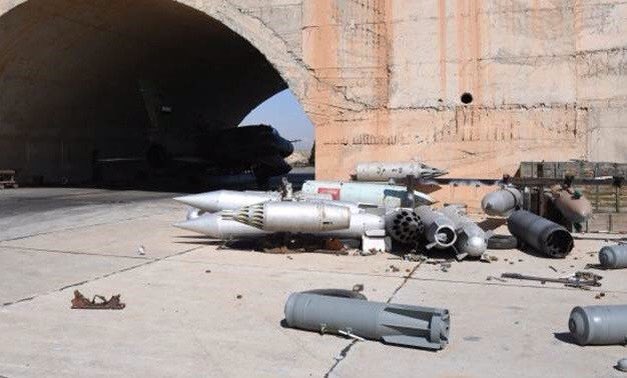
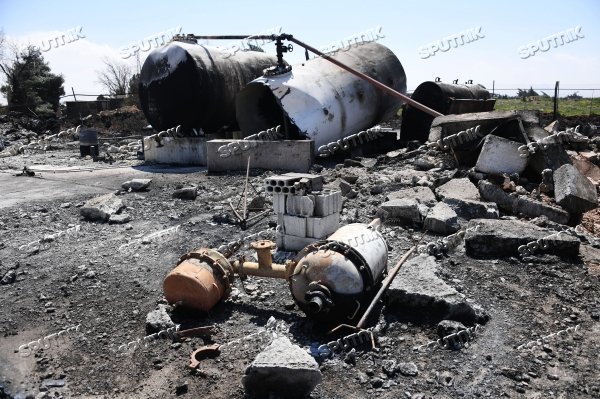
The attack is in retaliation for the Syrian dictator for using banned chemical agents in the April 4 attack.
“Bashar al-Assad launched a horrible chemical weapons attack on innocent civilians,” Trump said in a statement to the nation. “Using a deadly nerve agent, Assad choked out the lives of helpless men, women and children. It was a slow and brutal death for so many. Even beautiful babies were cruelly murdered in this very barbaric attack. No child of God should ever suffer such horror.”
Vital National Security Interest
Trump ordered the targeted military strike on the airfield that launched the attack. “It is in the vital national security interest of the United States to prevent and deter the spread and use of deadly chemical weapons,” the president said.
No one disputes that Syria used banned chemical weapons of the people of Idlib, he said, adding that this is a violation of the Chemical Weapons Convention. Syria also ignored United Nations Security Council resolutions.
“Years of previous attempts at changing Assad’s behavior have all failed and failed very dramatically,” Trump said. “As a result, the refugee crisis continues to deepen and the region continues to destabilize, threatening the United States and its allies.”
Trump called on all civilized nations to join the United States in seeking an end to the slaughter in Syria, and to end the threat terrorism poses in the blighted nation.
Details of Strike
Shortly after the president’s address, Pentagon spokesman Navy Capt. Jeff Davis issued a statement providing details of the strike. It took place at about 8:40 p.m. EDT — 4:40 a.m. April 7 in Syria, he said.
The strike was conducted using Tomahawk Land Attack Missiles, or TLAMs, launched from the destroyers USS Porter and USS Ross in the eastern Mediterranean Sea, Davis said in his statement. A total of 59 TLAMs targeted aircraft, hardened aircraft shelters, petroleum and logistical storage, ammunition supply bunkers, air defense systems, and radars.
“As always,” Davis said, “the U.S. took extraordinary measures to avoid civilian casualties and to comply with the Law of Armed Conflict. Every precaution was taken to execute this strike with minimal risk to personnel at the airfield.”
The strike was “a proportional response to Assad’s heinous act,” the Pentagon spokesman said, noting that Shayrat Airfield was used to store chemical weapons and Syrian air forces. The U.S. intelligence community assesses that aircraft from Shayrat conducted the April 4 chemical weapons attack, he added, and the strike was intended to deter the regime from using chemical weapons again.

Russian forces were notified in advance of the strike using the established deconfliction line, Davis said, and U.S. military planners took precautions to minimize risk to Russian or Syrian personnel at the airfield.
“We are assessing the results of the strike,” Davis said. “Initial indications are that this strike has severely damaged or destroyed Syrian aircraft and support infrastructure and equipment at Shayrat Airfield, reducing the Syrian government’s ability to deliver chemical weapons. The use of chemical weapons against innocent people will not be tolerated.”
***
Russian military personnel were at the base during the U.S. attack, soldiers told Al Masdar. But the Russians weren’t harmed during the strike, which focused on the airfields, fuel tankers and aircraft hangars, according to Al Masdar. Rex Tillerson, Secretary of State earlier in the afternoon, placed a call to Putin with advanced warning but no call was made to warn Syria.